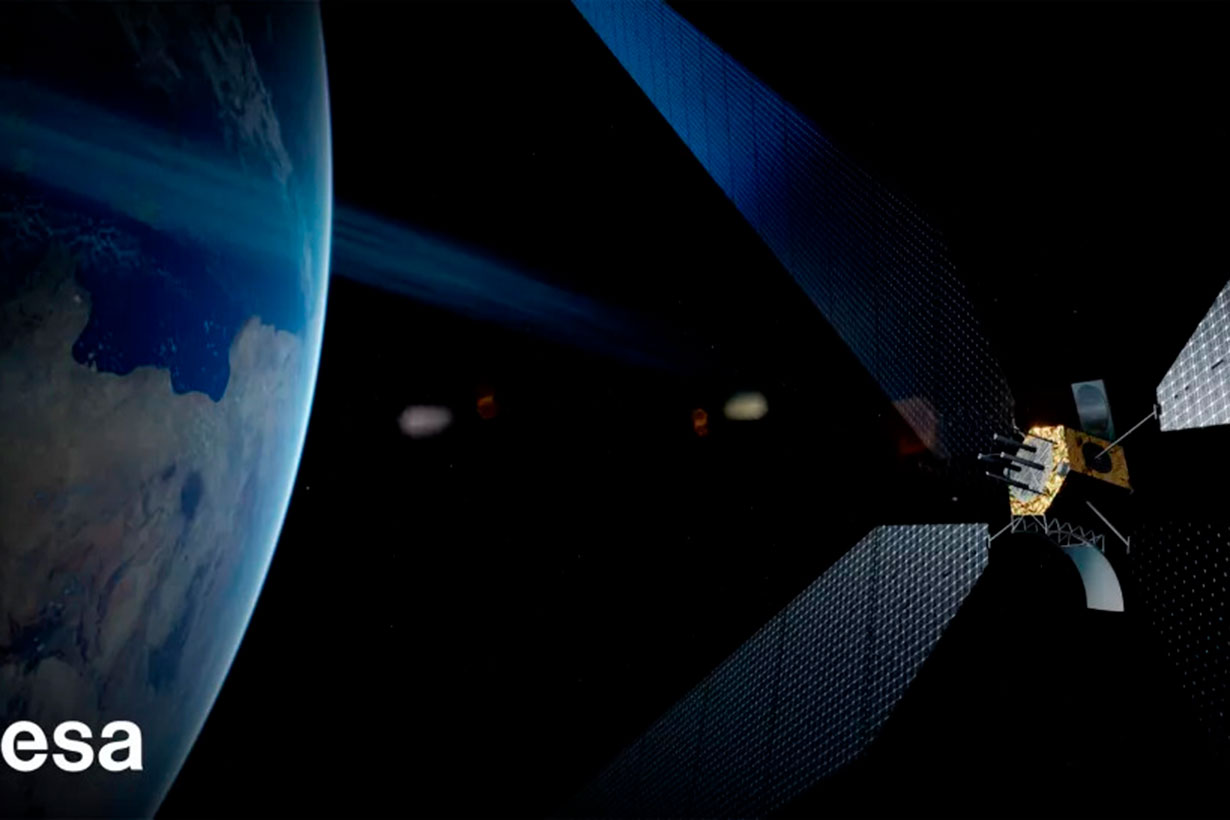CLOSE
About Elements
TANAKA is a leading company in the field of precious metals.
Advanced materials and solutions that support societal progress, the development stories behind them, the voices of engineers, and our management philosophy and vision—
Elements is an online media platform that shares insights that lead to a better society and a more prosperous future for the planet under the slogan “Mastering Precious Metals.”

Europe is looking at space-based solar power to address energy crisis

The European Space Agency will ask its member states to fund a preparatory space-based solar power program at a major meeting later this year.
The Solaris program would explore the potential of space-based solar power (SBSP) generation to provide clean energy and contribute to decarbonization by working with European industry to assess technical feasibility, benefits, implementation options, commercial opportunities and risks of the emerging technology.
SBSP involves collecting solar energy with huge solar arrays in geostationary orbit, an orbit at the altitude of 22,000 miles (36,000 kilometers) where satellites appear suspended above a fixed spot on Earth. Without the obstruction by Earth’s atmosphere, space-based solar power plants would generate energy more efficiently than Earth-based plants, and beam it to the ground for conversion into electricity.
Related: A solar power plant in space? The UK wants to build one by 2035.
ESA describes the Solaris program as a response to the current climate change crisis on Earth and a potential source of clean, affordable, continuous, abundant and secure energy. A decision on moving ahead with a European SBSP development program would be made by 2025, the agency said in a statement.
“Space-based solar power would be an important step towards carbon neutrality and energy independence for Europe,” ESA’s director general Josef Aschbacher tweeted on Aug. 16. “Two recent independent studies strongly recommend investments to advance the SBSP technologies needed to address our growing energy crisis.”
The two cost versus benefit studies on “Space-Based Solar Power (SBSP) for terrestrial energy needs” were completed earlier this month.
“We have the main building blocks already, but let me be clear: for the project to succeed, much technology development and funding is still needed,” Aschbacher wrote.
The Solaris proposal will be put forward at the ESA Council of Ministers in November, but how much funding is being sought is not known. The ultimate goal of SBSP would be to aid Europe’s transition to a net zero carbon world by 2050.
Related stories:
— The US Air Force wants to beam solar power to Earth from space (video)
— Solar power stations in space could be the answer to our energy needs
— Space-based solar power getting key test aboard US military’s mysterious X-37B space plane
The concept of SBSP first emerged in the 1960s but has recently become of great interest to a number of countries. The U.K. expressed its interest in an SBSP system earlier this year, while China is planning in-orbit tests before the end of the decade as a stepping stone to a gigawatt-level system by mid-century.
In the U.S., NASA is also interested in studying SBSP while a billionaire-backed project at Caltech in Pasadena is already working on hardware for harvesting solar energy collected in space.
While promising a source of clean, continuous energy, space-based solar power faces major challenges in the shape of technological, economic, policy and other hurdles.
Follow us on Twitter @Spacedotcom and on Facebook.
This article was written by Andrew Jones from Space and was legally licensed through the Industry Dive Content Marketplace. Please direct all licensing questions to legal@industrydive.com.
![]()







